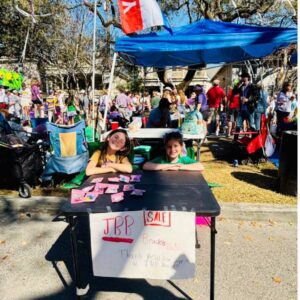3/23/2025 –
Citrullinemia Type 1. Urea Cycle Disorder. Hyperammonemia. Words that I had never heard of and I didn’t even know existed until 2016. My husband and I received a quick education in March of that year when we received “the call” seven days after our daughter, Josey Claire, was born. She is our third child, so at the time we thought we had this newborn baby thing under control. In fact, when I received the phone call from the pediatrician’s office asking strange questions about how she was doing, I handed the phone over to him. I was nursing her at the time and was too exhausted to understand why they were even calling. Most of that time period is now a blur and was honestly very stressful. It was so scary to learn about her condition and the potential outcomes. Thanks to our genetics team at Tulane Hospital we were reassured and Josey has been in great hands every step of the way.
Fast forward to 2025. Josey just had a birthday and is now nine years old. She is in third grade and is thriving! Thankfully, school has never been an issue and her teachers have always been understanding and caring. In the early days we were so worried about what she would eat and how she would handle any peer pressure or teasing. With the advice from our dietitians at Tulane, we have always taken the matter of fact approach with her diet, and it has worked well for us. She is aware of her diet and will speak up for herself. Most of her friends know what she can and cannot eat. Because of her diet, formula and medication, she lives a very normal life. She’s just a girl who loves dancing, gymnastics and of course, Taylor Swift. She has even started a little bracelet making business with her friends.
So far we have never experienced a hyperammonemic crisis, and all signs indicate that Josey is a milder case, and we do not take that for granted.
CTLN1 is caused by deficiency or absence of the enzyme argininosuccinate synthetase (ASS). ASS is one of six enzymes that play a role in the removal of nitrogen from the body, a process known as the urea cycle. The lack of this enzyme results in excessive accumulation of nitrogen, in the form of ammonia (hyperammonemia) in the blood and all body fluids.





